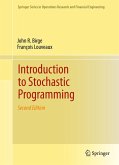However, actually solving a dynamic decision problem by means of approximate dynamic programming still is a major scientific challenge. Most of the work done so far is devoted to problems allowing for formulation of the underlying optimization problems as linear programs. Problem domains like scheduling and routing, where linear programming typically does not produce a significant benefit for problem solving, have not been considered so far. Therefore, the industry demand for dynamic scheduling and routing is still predominantly satisfied by purely heuristic approaches to anticipatory decision making. Although this may work well for certain dynamic decision problems, these approaches lack transferability of findings to other, related problems.
This book has serves two major purposes:
- It provides a comprehensive and unique view of anticipatory optimization for dynamic decision making. Itfully integrates Markov decision processes, dynamic programming, data mining and optimization and introduces a new perspective on approximate dynamic programming. Moreover, the book identifies different degrees of anticipation, enabling an assessment of specific approaches to dynamic decision making.
- It shows for the first time how to successfully solve a dynamic vehicle routing problem by approximate dynamic programming. It elaborates on every building block required for this kind of approach to dynamic vehicle routing. Thereby the book has a pioneering character and is intended to provide a footing for the dynamic vehicle routing community.
Dieser Download kann aus rechtlichen Gründen nur mit Rechnungsadresse in A, B, BG, CY, CZ, D, DK, EW, E, FIN, F, GR, HR, H, IRL, I, LT, L, LR, M, NL, PL, P, R, S, SLO, SK ausgeliefert werden.









